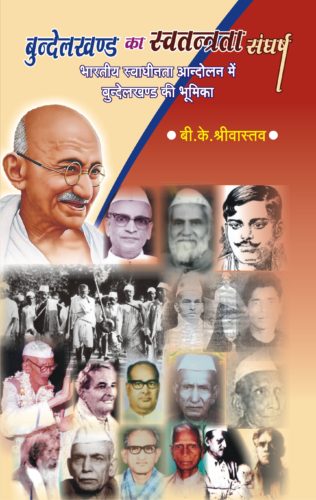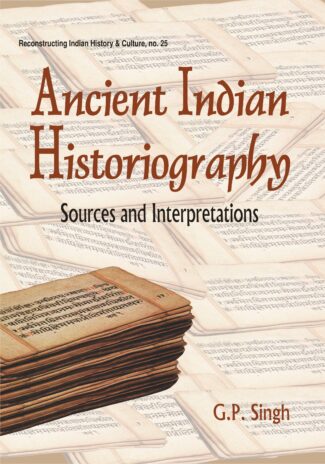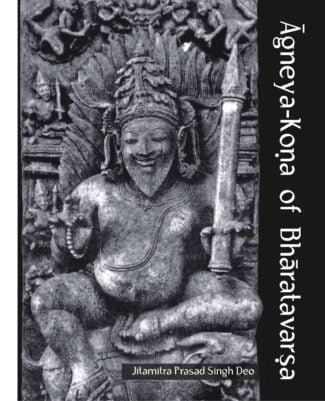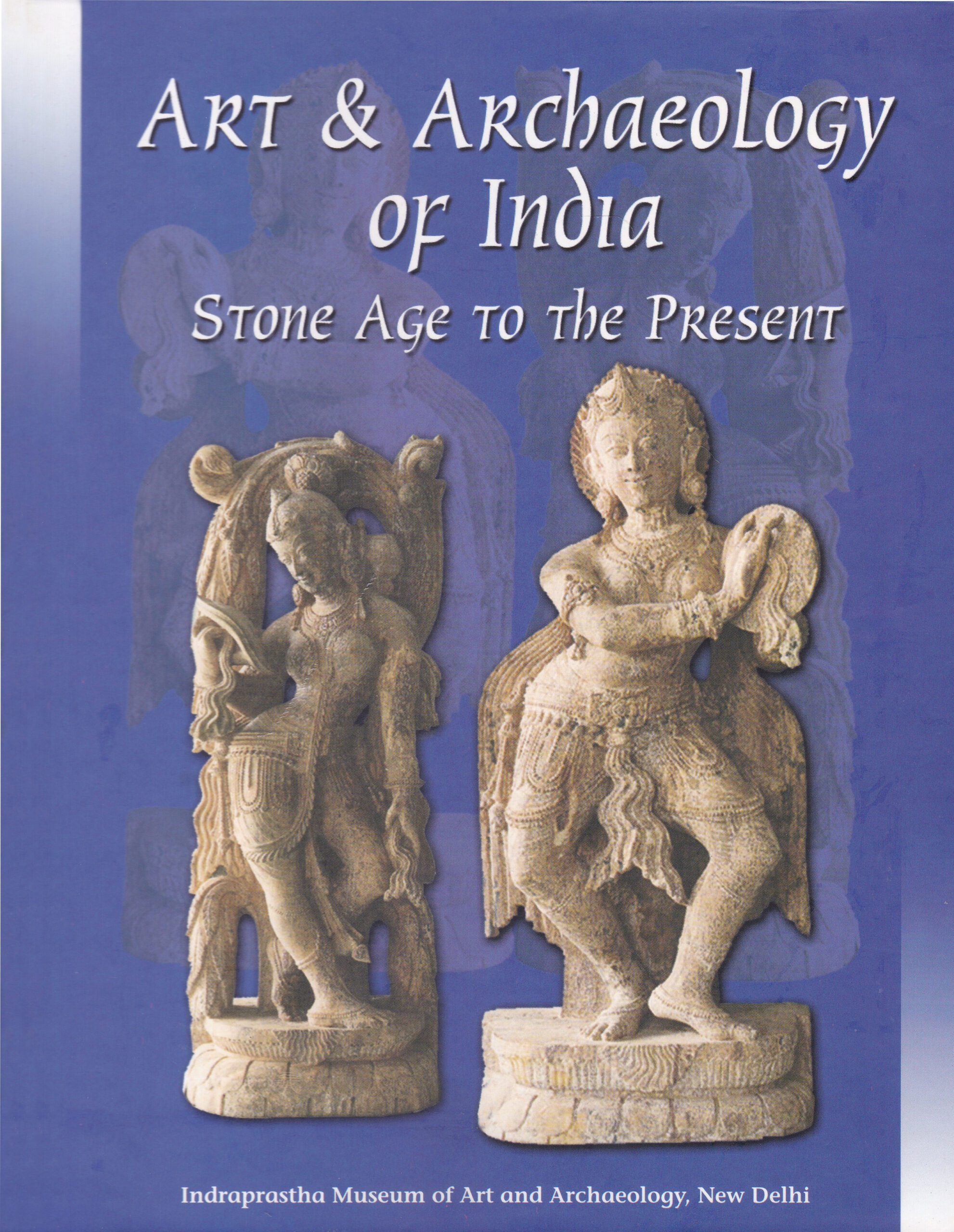

Ancient History of I...
Ancient History of India
Manusmriti Revisited by: Charles J. NaegeleRe-dating and re-interpreting Manusmriti, possibly the oldest law work in the world, the book deals with aspects of Ancient India, including Aryan society and culture, castes and guilds, use of technology and related practices in the Indus Valley Civilisation. It also provides a look at other ancient law codes of the then known world and then compares them with the Manusmriti.
Original price was: ₹500.00.₹450.00Current price is: ₹450.00.
ISBN: 9788124605813
Year Of Publication: 2011
Edition: 1st
Pages : xviii, 220p.
Bibliographic Details : Appendices; Bibliography; Index
Language : English
Binding : Hardcover
Publisher: D.K. Printworld Pvt. Ltd.
Size: 23
Weight: 500
This is a fresh look at the history of Ancient India, centering on the Law Code of Manu (Manusmriti / Manu Dharmashastra), and its relationship to Rigveda and its possible relationship to the Indus/Harappan Civilisation of 4000 to 5000 years ago. It also throws light on Aryan society and culture, castes and guilds, use of technology and related practices in the Indus Valley Civilisation.
Dr. Charles Naegele, a practicing lawyer in Silicon Valley, California, USA, and a lifelong student of classical Indian knowledge, has written a work that will be certain to stir up controversy regarding the re-dating of the Law Code of Manu and the well-documented research concerning almost no possibility of Aryan Invasion Theory and the numerous similarities between the text of the Law Code of Manu and the archeological finds from the Indus/Harappan Civilisation.
Scholars and history buffs, as well as everyone who is proud of Indian heritage will enjoy not only this work, but also his future works.
1. Overview 1
1.1 Law Code of Manu (Manusmriti) discovered in late 1700s/William Jones
1.2 Sanskrit-English Dictionary by Monier-Williams
1.3 Sanskrit, the Mother of Many Languages
1.4 Transliteration of Sanskrit to English Harvard-Kyoto Convention
1.5 Rigveda Translated into English
1.6 Oral Preservation of Rigveda and Manusmriti
1.7 Memorisation of Long Hymns through Life
1.8 Aryan Invasion Theory Examined for Time-Line Purposes
1.9 Is Aryan Invasion Theory a Myth?
1.10 Does Arya mean White-Skin or Clean Soul?
1.11 How Can Warrior Aryans be Peace-Loving Spiritualists?
1.12 Aryan Invasion Countered by Discovery of Cities of Mohenjo-Daro and Harappa in 1920s
1.13 Satellite Photos of 1970 Show River Sarasvati Dried up in 1900 bce
1.14 Mehrgarh Discovered in 1974
1.15 Worlds First Dental Drilling in Mehrgarh Discovered in 2001
1.16 Civilisation Prior to Drying up of River Sarasvati 3900 Years Ago
1.17 River Sarasvati Fertile Crescent
1.18 India International Trade more than 4000 Years Ago gives Clues
1.19 Weights and Measures from Indus/ Harappan Civilisation give Clues
1.20 Aryan Invasion Theory: No Findings in Support in Indus/Harappan Civilisation
1.21 Vedic Culture Described
1.22 Where are Horses referred to in Rigveda for Time-Line Purposes
1.23 European Horse or Shetland Pony with 34 Ribs mentioned in the Rigveda
1.24 Ashvattha Tree meaning Horses stand under this tree
1.25 Rigveda lists “Tropical” Trees, including Pipala Tree
1.26 Rigveda composed near River Sarasvati by “Natives”
1.27 Skeletal Remains disprove Aryan Invasion
1.28 Gene Pool disproves Aryan Invasion
1.29 Where are the Wooden Rigveda Chariot Wheels with “Spokes”?
1.30 Only Non-Wood Terracotta Model Wheels have “Spokes”
1.31 Where is the “Iron” spoken of in Rigveda for Time-Line Purposes
1.32 “Ayas” may not mean “Iron”
1.33 Bronze “Hand-Saw” Hard as Iron
1.34 Sophisticated Thought of Rigveda may correspond with Sophisticated High Temperature Technology of the Indus/Harappan Civilisation
1.35 Conclusion
2. History of Law Code of Manu (Manusmriti or Manu-Dharma-Shastra)
2.1 Oldest Law Code in India
2.2 Oral Tradition Preservation
2.3 Similarities among Rigveda, Manusmriti and Indus/Harappan Civilisation
2.4 Manusmriti Composed after Rigveda
2.5 River Sarasvati dates Rigveda and Manusmriti
2.6 The Physical Location Similarities/Location of River Sarasvati
2.7 Location of River Drishadvati
2.8 Additional Geography
2.9 Rigveda Preserved Orally Word-for-Word
2.10 Brahmanas, “Mouths of the Creator” or Human Library Books” or “Human Computers”
2.11 Examples of Modern-day Indians able to Memorise Large Body of Knowledge
2.12 Vedas Spiritually Oriented
2.13 Brahmanas Not “Priests”
2.14 “Veda” Defined
2.15 Chanting of Rigveda as a Hymn
2.16 Rigveda: Multiple Layers of Messages
2.17 Meaning of “Manu”
2.18 Manusmriti: Alternate Names
2.19 Buddhist Law of Dharma
2.20 Smriti vs. Shruti
2.21 Rishi Defined
2.22 Spiritual Underpinnings of the Manusmriti through Rigveda
2.23 Example of Shruti: Vedic “Text” of Rigveda
2.24 Rigveda gives Immediate Divine Rewards or Punishments
2.25 Rigveda Words packed with Multiple Meanings
2.26 Agni
2.27 Brahman
2.28 Indra
2.29 Vishnu
2.30 Varuna
2.31 Conclusion
3. Law Code of Manu Translations: Caste and Guilds in Ancient India
3.1 Originally no “Fixed Caste” in Ninth Chapter of Rigveda
3.2 Individuals get to choose their Work or Class in Rigveda
3.3 Manusmriti: Fixed Caste by Birth
3.4 Caste attributed to the Creator in Law Code of Manu
3.5 M.N. Dutt says No Original Oppression, Just “Division of Labour”
3.6 Dutt claimed That Servants/Shudras were Free
3.7 Movement between Classes forbidden in Manusmriti
3.8 Brahmanas to Teach and Perform Sacrifices
3.9 Kùatriyas to Protect the People
3.10 Vaishyas to Raise Cattle and become Traders
3.11 Shudras to Serve Everyone Else
3.12 Smart Servants were denied Advancement for Life
3.13 Rigveda had Changeable Class; Manusmriti had Fixed Caste
3.14 “Man-Made Law” for Law Code of Manu
3.15 Guilds: Important In Indus/Haaappan Civilisation
3.16 Guilds: Important in Manusmriti and Rigveda
3.17 Breach of “Guild” Contract in Manusmriti
3.18 “Village” is a Group of Households
3.19 “Confederation” can contain Different Castes and Foreigners
3.20 “Greed”: Selfish Interests
3.21 Precursor of Crime of Treason
3.22 Guilds vs. Tribes vs. Families
3.23 Conclusion
4. Advanced Thought in Ancient India
4.1 Rigveda as an Ultimate Source of Science
4.2 Astronomy Advancement in Rigveda and Manusmriti
4.3 Calendar invented in Ancient India
4.4 Sidereal Time used by Modern Astronomers
4.5 Mathematic Genius in Rigveda, Manusmriti and Indus/Harappan Civilisation
4.6 Shri-Yantras are 51– Degrees, Similar to Great Pyramid in Egypt
4.7 Shulbasutras (Mathematics)
4.8 Weights and Measures of Indus/ Harappa and Manusmriti
4.9 Speed of Light in Ancient India
4.10 Complexity of Sanskrit Language and the Rigveda
4.11 High Level of Development
4.12 Government
4.13 Kings and Chiefs to serve and protect
4.14 Soma
4.15 Tradition from Indus/ Harappan Civilisation
4.16 Eternal Law from Rigveda is Rta
4.17 The Manusmriti regarding origins of Law
4.18 Brahmanas defined by the Manusmriti
4.19 Conclusion
5. Technology in Rigveda, Indus/ Harappan Civilisation and Manusmriti Society
5.1 Harnessing Animal Power and Division of Labour
5.2 Indus/Harappan Civilisation Technology of Standardisation
5.3 Worlds Oldest “High-Fired” Ceramics and Jewellery
5.4 Carnelian Beads
5.5 White Micro-Beads
5.6 Twisted Metal Drill/Compass/Bronze
5.7 City-Planning in Rigveda, Indus/ Harappa and Manusmriti
5.8 Lothal Bricks/Engineering Verified
5.9 Mohenjo-Daro and Harappa excelled Egypt
5.10 International Trade in Rigveda, Indus/ Harappan Civilisation and Manusmriti
5.11 Indus/Harappan Civilisation Remains found in the Persian Gulf and Iraq
5.12 Lothal and Dvarka
5.13 Sea Trade in Animals and Wood
5.14 Further Evidence of International Trade
5.15 Water Technology
5.16 Water in Rigveda, Indus/Harappa Civilisation and Manusmriti
5.17 Mystery of Written Records from Indus/Haaappan Civilisation
5.18 Conclusion
6. Decline of the Indus/Harappan Civilisation
6.1 Earthquake of 1900 bce
6.2 Earlier Earthquake in the Port City of Dholavira
6.3 Overuse of Natural Resources by Indus/Harappan Civilisation
6.4 3900 Years Ago (1900 bce) No More Indus/ Harappan Civilisation Urban Centres
6.5 No Sophisticated Bronze After Decline
6.6 1700 bce: End of Indus/Harappan Civilisation Writing and Seal-Making
6.7 Cotton in Ancient India
6.8 6000 Years Ago (4000 bce) Cotton: Rigveda composed before That Time
6.9 Climate Changes in India
6.10 Mesopotamia traded with Dilman, Makan and Meluhha (Ancient India)
6.11 Decline of the Indus/Harappan Civilisation, No More Weights and Measures
6.12 Conclusion
7. Comparative Law
7.1 Ancient Legal Codes/Which Ones are Extant or have Survived?
7.2 4300 Years Ago (2350 bce): Urukaginas Code (Sumeria)
7.3 4200 Years Ago (2050 bce): Ur-Nammus Code (Mesopotamia)
7.4 3900 Years Ago (Pre-1900 bce): Manusmriti (India)
7.5 3700 Years Ago (1700 bce): Hammurabis Code (Babylonia)
7.6 3600 Years Ago (1600 bce): Hittite Code (Assyria)
7.7 3300 Years Ago (1300 bce): The Ten Commandments (Judea)
7.8 2600 Years Ago (621 bce): Dracos Law (Athens)
7.9 2600 Years Ago (600 bce): Lycurgus Law (Sparta)
7.10 2500 Years Ago (550 bce): Solons Laws (Athens)
7.11 2500 Years Ago (536 bce): The Book of Punishments and Confucius (China)
7.12 2400 Years Ago (450 bce): The Twelve Tables (Rome)
7.13 1500 Years Ago (ce 529): Justinians Code (Roman Empire)
7.14 Hammurabis Code Influenced Many Other Legal Codes
7.15 The Manusmriti may have Influenced the Code of Hammurabi
7.16 Trial by Ordeal in Both Codes
7.17 Judicial Misconduct in Both Codes
7.18 Curse if One does not Respect the Law in Both Codes
7.19 Punishment based on Class in Both Codes
7.20 Negligence in Both Codes
7.21 Ferry Boat Negligence in Both Codes
7.22 Influence of the Ten Commandments 3300 Years Ago (1300 bce) on Modern Law
7.23 Possible Manusmriti Influence on the Ten Commandments
7.24 The Ten Commandments: Similarity to the Manusmriti
7.24 No Keeping Seventh Day Holy
7.26 Not Exactly Honouring Thy Father and Mother
7.27 The Manusmriti: Pre-dates the Ten Commandments
7.28 Assura Code (1075 bce) vs. the Manusmriti
7.29 Hittite (Nesilim) Code (1600 bce) vs. the Manusmriti
7.30 Solons Code (600 bce) vs. Manusmriti
7.31 Twelve Tables (450 bce) vs. Manusmriti
7.32 Treason in Both Codes
7.33 No Marriage between Classes in Both Codes
7.34 Debt Punishment in Both Codes
7.35 Usury comparing two Ancient Legal Codes
7.36 Classes of People
7.37 Usury: The Amount of Interest that One could Legally Charge
7.38 Conclusion
8. Conclusion
8.1 The Original Manusmriti may Possibly have been Composed during the Indus/Harappan Civilisation 3000-2000 bce
8.2 Law Code of Manu Composed after Rigveda, before 250 bce
8.3 Oral Preservation of Rigveda and the Manusmriti
8.4 River Sarasvatã dates Rigveda and Manusmriti
8.5 Urban Civilisation Similarities
8.6 “Water Luxury” Similarities
8.7 Technological Similarities
8.8 Craft Guild Similarities
8.9 International Trade Similarities
8.10 Sophisticated Government Similarities
8.11 Weights and Measures Similarities
8.12 Prior to Greek Mathematics and Astronomy: Manusmriti
8.13 Manusmriti Similarities to other Ancient Law Codes
8.14 Conclusion
Appendix A
Indus/Harappan Civilisation Script
Guarding the Knowledge through Memorisation, not Writing
Indus/Harappan Civilisation Character Script
No Writing for “Social Control” Theory
“Bull” Connection of Rigveda, Manusmriti and Indus/Harappan Civilisation
Conclusion
Appendix B
Theories regarding Indus/Harappan Civilisation Script
Yoga and Cakra Theory of Indus/ Harappan Civilisation Script
Sanskrit, Devanagari, Brahmi, Indus/ Harappan Civilisation Script
Cakra Theory and Semi-Vowels
Vowel Character “A” Analysis
Consonant Character Analysis
Appendix C
Sanskrit Character Definitions
Sanskrit to English Dictionary: Summary
of Syllables defined by Monier-Williams
Bibliography
Index








